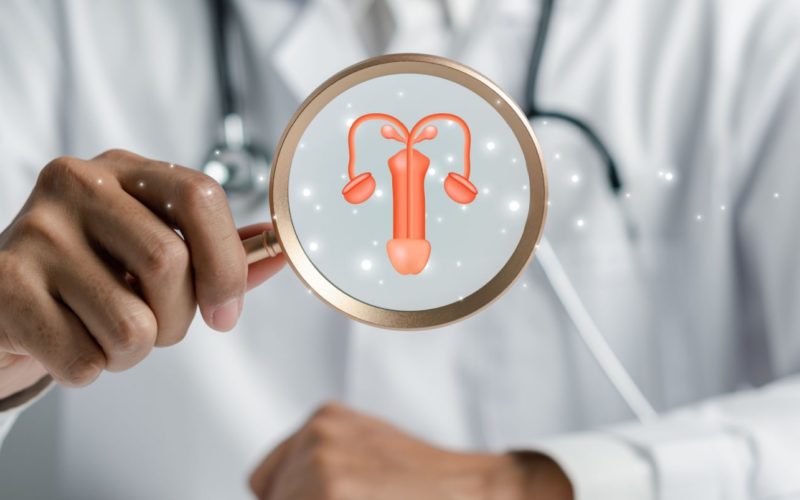The descent of testicles is an important aspect of male reproductive development. It is a naturally occurring process during foetal development that involves the movement of testes from the abdominal cavity into the scrotum. However, in some cases, testicular descent may be incomplete, leading to conditions such as undescended testicles. It is one of the most common genital malformations in boys. Genetics, endocrine, environment, and other factors play a role in determining foetal testicular descent. The treatment of untreated testis should start after 6 months and be completed by the baby’s 1st birthday.
Repair interventions, such as laparoscopic orchidopexy, aim to address this issue by surgically repositioning the undescended testicles into the scrotum. Understanding the complexities of testicular descent and repair procedures is essential for ensuring optimal male reproductive health.
Types of Undescended Testicles

- Bilateral undescended testicles: In this type, both testicles remain undescended. The individual may face challenges related to fertility and an increased risk of testicular cancer.
- Unilateral undescended testicle: When only one testicle fails to descend, the other typically functions normally. However, the descended testicle may compensate for the undescended one, affecting overall testicular health.
- Retractile testicles: Retractile testicles exhibit a transient rise and fall, often in response to temperature changes or stress. While they may appear similar to undescended testicles, they are usually self-corrected without medical intervention. Monitoring the condition is crucial, and if the retraction persists, further evaluation and surgical treatment may be necessary.
- Acquired undescended testicles: In some cases, testicles that were descending correctly may arise later due to various factors, such as trauma or hormonal imbalances. It is important to address the root cause, and treatment may include surgery or hormone therapy.
Testicle Repair Surgery
Testicular repair surgery, also known as laparoscopic orchidopexy is a medical procedure performed to address various conditions affecting the testicles. This surgery is commonly employed to treat undescended testicles that do not correct itself by the age of one. The following are the various steps involved in the undescended testicle repair surgery:Preoperative assessment
Before the surgery, a thorough evaluation of the patient's medical history and physical examination is conducted. Diagnostic imaging, such as ultrasound, may be employed to assess the position and condition of the undescended testicles. This assessment helps the surgeon plan the procedure effectively.Surgical procedure
The surgery is performed under general anaesthesia to ensure the patient is unconscious and pain-free during the procedure. Laparoscopic Orchidopexy involves making keyhole incisions in the abdomen and an incision in scrotum to access the undescended testicle. The surgeon carefully moves the testicle into the scrotum and secures it in place using stitches. These stitches are designed to hold the testicle in its new location and prevent it from moving back into the abdomen. The incision is then closed with dissolvable sutures or stitches that may need removal after a specified period. In most cases, laparoscopic techniques may be utilized for a less invasive approach.Recovery and Post-operative care
Postoperatively, patients may experience mild discomfort and swelling. Recovery time varies, but most individuals can resume normal activities within a few days to weeks. Gentle cleaning of the surgical site and adherence to any wound care instructions provided by the healthcare team are essential. Regular follow-up appointments are necessary for monitoring progress and addressing any concerns. Parents must look for signs of infection, such as increased redness, swelling, or unusual discharge at the surgical site. Nutrition plays a role in the recovery while a balanced diet supports healing and overall well-being. Adequate fluid intake is particularly important to prevent dehydration, especially if medications like pain relievers are being used. Parents or caregivers should closely observe the child for changes in behaviour, appetite, and overall mood. Open communication with the healthcare provider ensures any issues are promptly addressed. Potential complications: While orchidopexy is generally considered safe, like any surgery, it carries some risks. Possible complications include infection, bleeding, and damage to surrounding structures. Patients must follow postoperative care instructions to minimize these risks. Long-term outlook: Orchidopexy has a high success rate in bringing the testicles into the scrotum. Regular follow-up appointments with a healthcare provider are essential to monitor the patient's progress and ensure the effectiveness of the procedure. In conclusion, testicular repair surgery, or orchidopexy, is a procedure designed to correct undescended testicles. This corrective surgery aims to enhance fertility, reduce the risk of complications, and address potential psychological concerns. Success rates are generally high, and postoperative care involves monitoring for any complications. Overall, undescended testis surgical repair is an effective intervention with positive outcomes for both physiological and psychological well-being. NU Hospitals, Bengaluru, India, is a leading medical institute for undescended testis surgical repair, standing out for its expertise and commitment to patient care. Renowned for employing cutting-edge techniques, the hospital ensures precise and effective procedures. With a dedicated team of skilled surgeons and state-of-the-art facilities, NU Hospitals prioritizes the well-being of children undergoing undescended testis repair, making it a top-notch choice for those seeking high-quality medical treatment.References:
- Undescended Testis. National Library of Medicine. https://www.ncbi.nlm.nih.gov/pmc/articles/PMC2737432/.
- Undescended Testis. Mayo Clinic. https://www.mayoclinic.org/diseases-conditions/undescended-testicle/diagnosis-treatment/drc-20352000.
- Undescended testicles. National Health Service. https://www.nhs.uk/conditions/undescended-testicles/treatment/.

